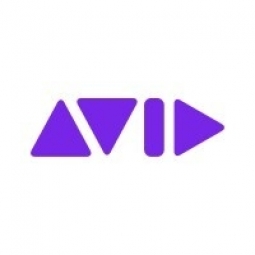Technology Category
- Application Infrastructure & Middleware - Database Management & Storage
- Infrastructure as a Service (IaaS) - Cloud Storage Services
Applicable Industries
- Education
- Equipment & Machinery
Applicable Functions
- Quality Assurance
Use Cases
- Remote Collaboration
- Smart Campus
Services
- Testing & Certification
- Training
About The Customer
Seneca is a leading destination for students planning a career in the media industry. Located in Toronto, Canada, the institution combines a strong academic foundation with hands-on training on industry-leading media technology. At Seneca’s School of Media, students prepare for careers in a variety of media-related industries, including movie and television production and digital media. Seneca has been using Avid Media Composer nonlinear editing systems and Pro Tools digital audio workstations for the past decade. The institution is committed to implementing innovative technologies and services to offer real-world learning experiences to its students, with the aim of establishing Seneca as the most advanced institution in Canada, providing cutting-edge media technology.
The Challenge
Seneca, a leading institution for students planning a career in the media industry, faced the challenge of equipping its students with the necessary skills to succeed in the highly competitive media industry. The institution had been using Avid Media Composer nonlinear editing systems and Pro Tools digital audio workstations for a decade, but it wanted to provide students with broader access to Avid technology, beyond the classroom. Additionally, keeping technology up-to-date in the rapidly changing media industry was a constant challenge. Seneca's existing media production infrastructure was over five years old, and the legacy technology did not enable students to develop the requisite skills to compete in the industry. It was also expensive to maintain and support. Seneca faced the challenge of dealing with a series of silos, including classrooms, editing suites, television studios, and centralized storage, each with unique limitations and at different stages of maturity in its upgrade path.
The Solution
Seneca expanded its partnership with Avid to become an Avid Media Campus site, standardizing on Avid’s platform-based workflows across its programs. This ensured students had access to the same state-of-the-art creative tools they would use in their professional careers, while providing Seneca with a predictable budgeting process. Seneca partnered with Avid to define a five-year Avid Media Campus agreement that provided flexible volume licensing and a range of industry solutions tailored to the institution’s specific needs. Avid channel partner Deltech Communications supported the implementation of Avid’s industry-leading tools including audio and video editing, asset management, storage, graphics, music notation and publishing, and content ingest and playout. Seneca selected Avid’s Maestro Graphics family for on-screen graphics creation and management. To facilitate group collaboration, a core component of Seneca’s media training, Seneca implemented Avid NEXIS and MediaCentral | Production Management. This allowed Seneca to provide students with access to technology outside classrooms and laboratories, facilitating remote collaboration and increasing the quality of content creation.
Operational Impact

Case Study missing?
Start adding your own!
Register with your work email and create a new case study profile for your business.
Related Case Studies.

Case Study
Smart Water Filtration Systems
Before working with Ayla Networks, Ozner was already using cloud connectivity to identify and solve water-filtration system malfunctions as well as to monitor filter cartridges for replacements.But, in June 2015, Ozner executives talked with Ayla about how the company might further improve its water systems with IoT technology. They liked what they heard from Ayla, but the executives needed to be sure that Ayla’s Agile IoT Platform provided the security and reliability Ozner required.

Case Study
IoT enabled Fleet Management with MindSphere
In view of growing competition, Gämmerler had a strong need to remain competitive via process optimization, reliability and gentle handling of printed products, even at highest press speeds. In addition, a digitalization initiative also included developing a key differentiation via data-driven services offers.

Case Study
Predictive Maintenance for Industrial Chillers
For global leaders in the industrial chiller manufacturing, reliability of the entire production process is of the utmost importance. Chillers are refrigeration systems that produce ice water to provide cooling for a process or industrial application. One of those leaders sought a way to respond to asset performance issues, even before they occur. The intelligence to guarantee maximum reliability of cooling devices is embedded (pre-alarming). A pre-alarming phase means that the cooling device still works, but symptoms may appear, telling manufacturers that a failure is likely to occur in the near future. Chillers who are not internet connected at that moment, provide little insight in this pre-alarming phase.

Case Study
Premium Appliance Producer Innovates with Internet of Everything
Sub-Zero faced the largest product launch in the company’s history:It wanted to launch 60 new products as scheduled while simultaneously opening a new “greenfield” production facility, yet still adhering to stringent quality requirements and manage issues from new supply-chain partners. A the same time, it wanted to increase staff productivity time and collaboration while reducing travel and costs.

Case Study
Integration of PLC with IoT for Bosch Rexroth
The application arises from the need to monitor and anticipate the problems of one or more machines managed by a PLC. These problems, often resulting from the accumulation over time of small discrepancies, require, when they occur, ex post technical operations maintenance.

Case Study
Data Gathering Solution for Joy Global
Joy Global's existing business processes required customers to work through an unstable legacy system to collect mass volumes of data. With inadequate processes and tools, field level analytics were not sufficient to properly inform business decisions.







